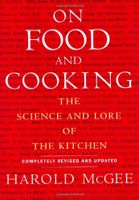Save 25% on ckbk Premium Membership with code FALLFLAVORS 🍁
The Importance of Avoiding Stress
By Harold McGee
Published 2004
By a fortunate coincidence, the methods of slaughter that result in good-quality meat are also the most humane. It has been recognized for centuries that stress just before an animal’s death—whether physical work, hunger, duress in transport, fighting, or simple fear—has an adverse effect on meat quality. When an animal is killed, its muscle cells continue to live for some time and consume their energy supply (glycogen, an animal version of starch). In the process they accumulate lactic acid, which reduces enzyme activity, slows microbial spoilage, and causes some fluid loss, which makes the meat seem moist. Stress depletes the muscles of their energy supply before slaughter, so that after slaughter they accumulate less lactic acid and produce readily spoiled “dark, firm, dry” or “dark-cutting” meat, a condition first described in the 18th century. So it pays to treat animals well. In November 1979, the New York Times reported that a Finnish slaughterhouse had evicted a group of young musicians from a nearby building because their practice sessions were resulting in dark-cutting meat.
Become a Premium Member to access this page
Unlimited, ad-free access to hundreds of the world’s best cookbooks
Over 160,000 recipes with thousands more added every month
Recommended by leading chefs and food writers
Powerful search filters to match your tastes
Create collections and add reviews or private notes to any recipe
Swipe to browse each cookbook from cover-to-cover
Manage your subscription via the My Membership page
Part of
Advertisement
Related Recipes
-
-
-
-
Related Reference
-
-
-
-
Advertisement



